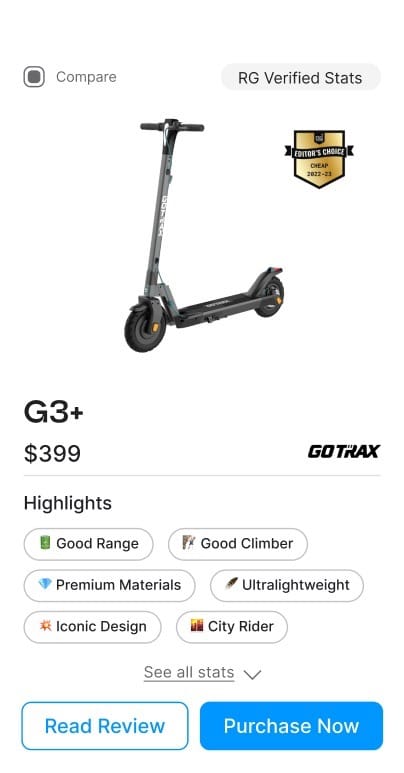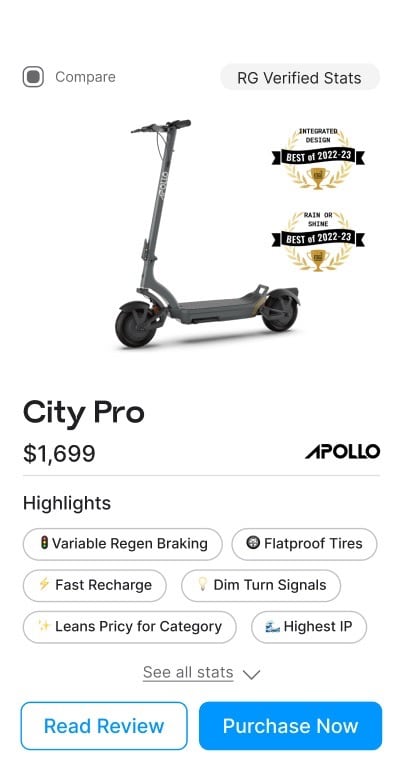

Paul Somerville
January 15, 2023
Rider Guide’s Editor-in-Chief is a seasoned expert in the electric scooter industry. With a wide-ranging background that includes managing scooter warehouses, selling thousands of motorcycles, and restoring high value (+1M) European sports cars, his expertise is unmatched. Having personally tested more than 100 electric scooters, he offers invaluable insights and recommendations to our readers. We are fortunate to have him as part of our team, as his diverse skill set and extensive experience ensure top-notch reviews.
Solar Powered Scooters?
Can you charge an electric scooter with solar panels?
The short answer is, yes, of course, you can charge pretty much any electronic device with solar power, provided you have enough sunlight, a large number of panels to gather sufficient energy, and a system to store and distribute the power safely and efficiently.
A solar charger does not require ideal conditions all the time. It can store the electricity it collects during peak hours and regulate its output voltage to ensure a reliably efficient charging time.
Here is where things get tricky. There are many ways to skin a solar panel, so to speak, and not all of them are equally efficient or practical.
The short answer is, yes, of course, you can charge pretty much any electronic device with solar power, provided you have enough sunlight, a large number of panels to gather sufficient energy, and a system to store and distribute the power safely and efficiently.
A solar charger does not require ideal conditions all the time. It can store the electricity it collects during peak hours and regulate its output voltage to ensure a reliably efficient charging time.
Here is where things get tricky. There are many ways to skin a solar panel, so to speak, and not all of them are equally efficient or practical.

A New Challenge
Using solar power to charge electric scooters makes perfect environmental sense and offsets much of the excess carbon emissions from building and shipping electric scooters and charging and transporting shared scooter fleets.
However, the technology to charge e scooters with solar power is still emerging, and it’s unclear what form it will take for consumers in the future, especially as companies develop proprietary technologies to meet the need for alternative sources of energy.
Charging low-powered devices like parking meters or smart phones with solar is one thing; charging the comparatively huge lithium-ion batteries in electric scooters presents a much bigger challenge.
One thing is certain: electric vehicles will need power from sources other than fossil fuels, and solar power still offers one of the best alternatives.
However, the technology to charge e scooters with solar power is still emerging, and it’s unclear what form it will take for consumers in the future, especially as companies develop proprietary technologies to meet the need for alternative sources of energy.
Charging low-powered devices like parking meters or smart phones with solar is one thing; charging the comparatively huge lithium-ion batteries in electric scooters presents a much bigger challenge.
One thing is certain: electric vehicles will need power from sources other than fossil fuels, and solar power still offers one of the best alternatives.

Shared Solar Charging Stations
It's an idea whose time has come. But shared or public solar powered charging stations for electric scooters are not yet a reality in cities around the world. If companies like Swiftmile succeed, they could be.
Swiftmile developed ad-funded solar charging stations with the technology to sense different brands of electric scooters with different voltage batteries.
The stations are placed in sunny areas and collect and store enough power to charge several scooters at once during peak times. Swiftmile has also proposed incentives to encourage riders of shared scooters to return the vehicles to charging stations rather than leaving them strewn around the city.
Implemented correctly, such ad-supported solar charging stations could be used to charge both shared vehicles and privately owned electric scooters. Swiftmile’s technology promises the smartest micromobility charging to date, “monitoring more than 15 independent variables” to ensure it's functioning safely to prevent overcharging and potential fire risks.
Swiftmile developed ad-funded solar charging stations with the technology to sense different brands of electric scooters with different voltage batteries.
The stations are placed in sunny areas and collect and store enough power to charge several scooters at once during peak times. Swiftmile has also proposed incentives to encourage riders of shared scooters to return the vehicles to charging stations rather than leaving them strewn around the city.
Implemented correctly, such ad-supported solar charging stations could be used to charge both shared vehicles and privately owned electric scooters. Swiftmile’s technology promises the smartest micromobility charging to date, “monitoring more than 15 independent variables” to ensure it's functioning safely to prevent overcharging and potential fire risks.

Do-It-Yourself Solar Charging
There’s always the DIY solar charging option, using consumer products like these foldable solar panels that claim to charge any kind of battery from 12 to 72 volts, for example. You might also, if you have the know-how and a solar charge controller, build your own charging station by combining individual solar panels, depending on your voltage needs.
Do-it-yourself solar charging technology is available on the market for everything from beer coolers to electric bikes. Some of these products are suited for technophiles who understand some of the basics of electrical engineering. As with all DIY solutions, solar charging comes with its own risks.
DIY solar charging might void any warranty you may have on the scooter (or its battery). And it's likely not possible to monitor output voltage via Bluetooth or wifi in a DIY solar charging setup. Without monitoring and analytics, these solutions might be more inefficient and unreliable than they're worth when it comes to charging large electric scooter batteries.
Do-it-yourself solar charging technology is available on the market for everything from beer coolers to electric bikes. Some of these products are suited for technophiles who understand some of the basics of electrical engineering. As with all DIY solutions, solar charging comes with its own risks.
DIY solar charging might void any warranty you may have on the scooter (or its battery). And it's likely not possible to monitor output voltage via Bluetooth or wifi in a DIY solar charging setup. Without monitoring and analytics, these solutions might be more inefficient and unreliable than they're worth when it comes to charging large electric scooter batteries.

Private, Proprietary Solar Charging Stations
Early adopters take note: in a race to get to private solar charging first, startup British scooter maker Bo unveiled their concept for the Bo E last year. It's a charging dock that collects energy from the sun all day and charges the Bo M electric scooter overnight. The Bo E is wifi enabled so users can monitor the status of both the charger and the scooter remotely.
Proper use of the Bo E relies on a few assumptions: that there exists a spot with enough full sun outside your home to collect sufficient power to charge the scooter’s 2kWh battery reliably; that sunny weather predominates where you are; and that users will feel comfortable leaving their expensive Bo M scooter outside overnight.
Supposedly available late this year, the Bo E integrates several security features to the keep the scooter safe from theft, though the exposure to bad weather still seems like a problem to surmount. In any case, it’s possible we’ll see more such devices, with innovative IoT and software integration. Or solar charging of personal electric scooters could take other forms that don't require you to leave your scooter outdoors.
Proper use of the Bo E relies on a few assumptions: that there exists a spot with enough full sun outside your home to collect sufficient power to charge the scooter’s 2kWh battery reliably; that sunny weather predominates where you are; and that users will feel comfortable leaving their expensive Bo M scooter outside overnight.
Supposedly available late this year, the Bo E integrates several security features to the keep the scooter safe from theft, though the exposure to bad weather still seems like a problem to surmount. In any case, it’s possible we’ll see more such devices, with innovative IoT and software integration. Or solar charging of personal electric scooters could take other forms that don't require you to leave your scooter outdoors.
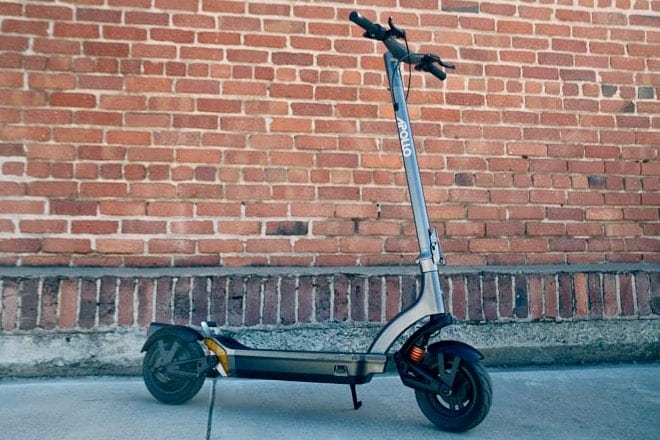
The Importance of IoT and Software to a Solar Powered Future
Whatever form solar charging takes, electric scooters will need smarter power management.
In order to charge safely and efficiently, the lithium-ion batteries in electric scooters have battery management systems, components that monitor and regulate the battery's charge and discharging.
Battery management systems prevent overcharging and battery fires, and they allow for the sophisticated monitoring of the scooter's battery and other analytics using software likeApollo scooters' innovative app.
Apollo's app is available on the upcoming Apollo Phantom V3, the Apollo City 2022, City Pro, and the Apollo Air. The software integrates with these scooters' IoT sensors to allow for real-time remote diagnostics.
Integrated IoT systems like these will be essential to efficient solar charging in the future as data-driven firmware updates to battery management systems can future-proof electric vehicles. Software can adapt and change an electric vehicle's power management as charging technology evolves and changes.
We don't know exactly where solar charging for electric scooters is heading, but it's likely that the most adaptable electric scooters like Apollo's IoT-enabled models are best equipped to meet a more energy efficient future.
In order to charge safely and efficiently, the lithium-ion batteries in electric scooters have battery management systems, components that monitor and regulate the battery's charge and discharging.
Battery management systems prevent overcharging and battery fires, and they allow for the sophisticated monitoring of the scooter's battery and other analytics using software like
Integrated IoT systems like these will be essential to efficient solar charging in the future as data-driven firmware updates to battery management systems can future-proof electric vehicles. Software can adapt and change an electric vehicle's power management as charging technology evolves and changes.
We don't know exactly where solar charging for electric scooters is heading, but it's likely that the most adaptable electric scooters like Apollo's IoT-enabled models are best equipped to meet a more energy efficient future.
Related Reviews
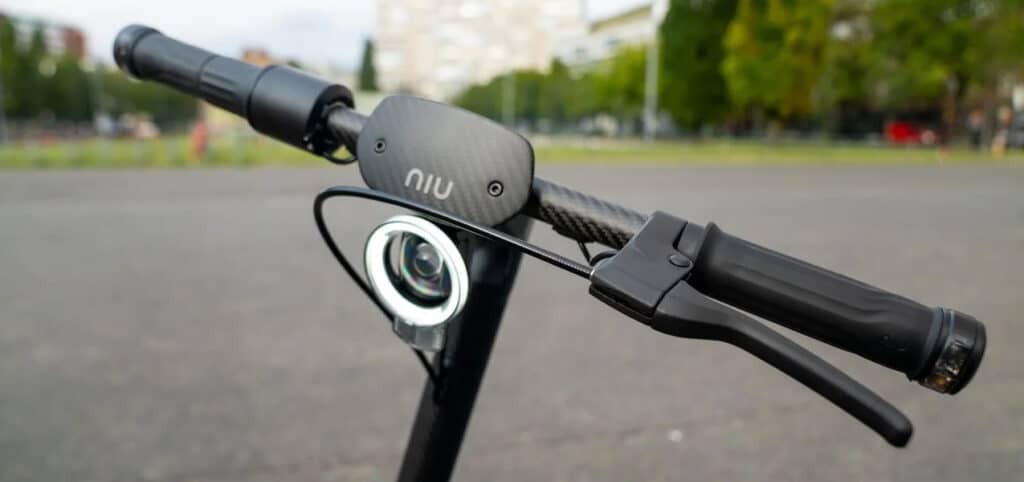

KQi Air
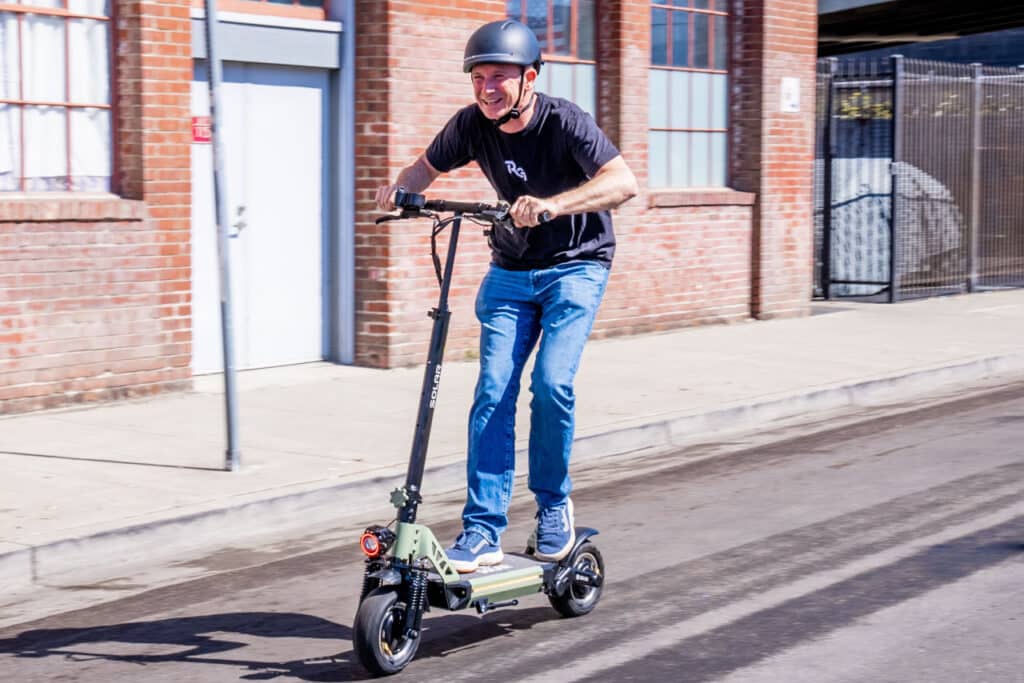

EQ


Ninebot F2 Pro
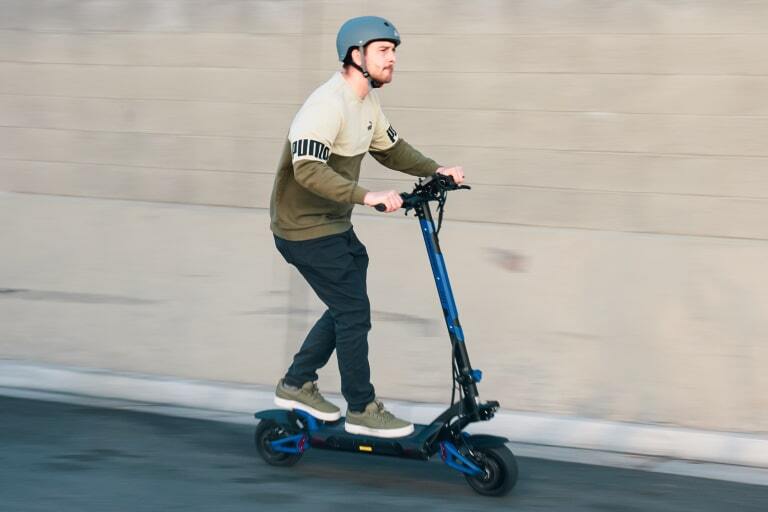

RS5+
Scooter with Swappable Battery!

Our newsletter has the biggest discounts, newest scooter reviews, best how-to’s, & no spam. Unsubscribe anytime!
Find your perfect ride
We built a tool that makes it effortless for you to find a scooter perfect for your lifestyle. Filter, compare, and sort through almost every electric scooter in the industry.
jump injump in



